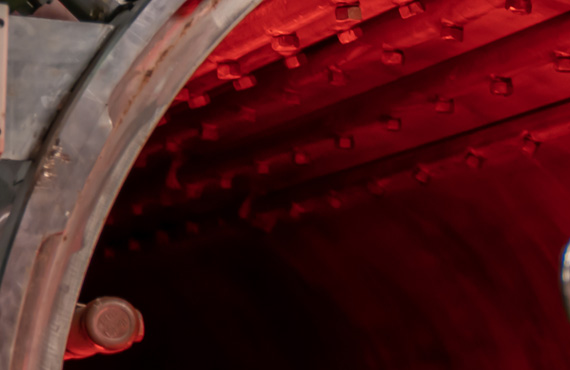Nitriding heat treatment is a thermochemical process in which nitrogen penetrates the metal surface to increase surface hardness and improve wear resistance. Nitrogen atoms enter the metal's crystal structure, forming a hard and wear-resistant layer. This process is carried out at low temperatures, minimizing part deformation.
Nitriding Heat Treatment
What is Nitriding Heat Treatment?
How is Nitriding Heat Treatment Applied?
- Preparation Stage: The metal surface is cleaned and made suitable for nitriding.
- Nitriding Stage:
- Gas Nitriding: Nitrogen is introduced by dissociating ammonia (NH₃) gas at high temperatures (500-600°C) on the metal surface.
- Plasma (Ion) Nitriding: Electrical plasma is created to allow nitrogen ions to penetrate the metal surface.
- Salt Bath Nitriding: The metal is saturated with nitrogen in molten salt baths.
- Cooling and Final Checks: After nitriding is completed, controlled cooling is applied, and the material gains its hardness.
Advantages of Nitriding
- Increases surface hardness, significantly improving wear resistance.
- Greatly improves fatigue resistance.
- Maintains dimensional stability due to the low temperature application.
- Increases resistance to corrosion.
Materials Used in Nitriding
| Alloy steels |
| Stainless steels |
| Titanium and titanium alloys |
| Cast irons |
| Aluminum alloys |

Main Industries
Nitriding heat treatment is a critical process for increasing hardness, wear resistance, and corrosion resistance. For this reason, it is widely preferred for durable and long-lasting mechanical components.
- Automotive: Camshafts, gears, crankshafts, engine components.
- Aerospace: Parts requiring high durability and lightweight materials.
- Machine Tools: Wear-resistant tool and machine components.
- Defense Industry: Military equipment resistant to harsh conditions.
- Energy and Petrochemical: Corrosion-resistant pipes and valve systems.

